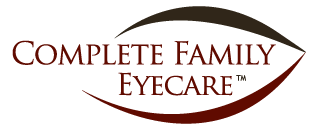Children with Increasing Prescriptions? New Contact Lenses Can Slow Down or Stop the Nearsighted Progression
The incidence of myopia (near-sightedness) is on the rise with some studies showing that 42% of Americans are myopic compared to 24% in 1972 with possible correlations between progression of myopia and screen time.
Myopia is the inability to see distances clearly and is usually the result of the eye growing too long. It is often inherited from the parents but can occur in children with little or no family history of myopia. In addition to needing to wear glasses or contact lenses, myopia can also put your children at risk for retinal detachment and other eye diseases later in life.
As a parent, some good questions to ask yourself regarding the possibility of your child developing a higher myopic prescription (meaning thicker glasses and worse vision):
- Do you currently wear glasses or contacts to correct your higher (-3.00 and higher) myopia? Our record myopia is -28.00!
- Do you have family members with myopia?
- Did you have LASIK surgery to correct your myopia?
- Simply put, are your glasses coke bottles and are you a danger to yourself if you are not wearing vision correction?
Contact Lenses to slow or stop the progression of myopia? Recently, the FDA has approved Cooper Vision MiSight single use, multifocal contact lenses to be prescribed for reducing the progression of myopia in children.
Q and A Regarding Myopia Control Contact Lenses
Q.) How do these contact lenses work to slow or stop the progression of myopia?
A.) The optics and the math behind the contacts are fairly complex but the central idea in myopia control is to prevent the eye from growing too long during the child’s rapid growth years. Multifocal contact lenses alter the way light is focused on the retina in such a way to discourage elongation of the eye and development or progression of myopia.
Q.) When is the best time to start using the myopia control contacts?
A.) The earlier the better in children with growing myopia.
Q.) How effective are the contacts in controlling myopia?
A.) From the Cooper Vision Data: Over a 3-year period, myopia progression slowed by 52% and 41% had no progression. Over a 6-year period, progression was less than 1 diopter (unit of myopia prescription). These are very encouraging results!
Q.) Do you need a prescription for myopia controlling contacts?
A.) Yes. A current eye examination (within 6 months) and a contact lens service/fitting visit for myopia control is required. Insurance coverage is variable.
Q.) How expensive are the contacts?
A.) Exact costs will vary depending on quantity of contact lenses purchased.
Q.) Can Vision Plans (VSP, Eyemed) be used to cover the cost of myopia controlling contacts?
A.) Plan coverage can vary, but usually YES.
Q.) What is the minimum age for wearing contact lenses
A.) Varies depending on maturity of patient and ability to safely insert and remove contact lenses.
Q.) Are the contacts effective in preventing progression of myopia in adults?
A.) Usually, myopia in adults is stable and not progressing.
Q.) Will my child have to continue wearing these contacts forever to prevent further myopia?
A.) Usually, myopia stabilizes after the age of 18 to 22 making other types of contact lenses applicable.
Thank you very much for reading and let us know if you have any questions.
Dr. Steve Reinders and Dr. Sarah Board

